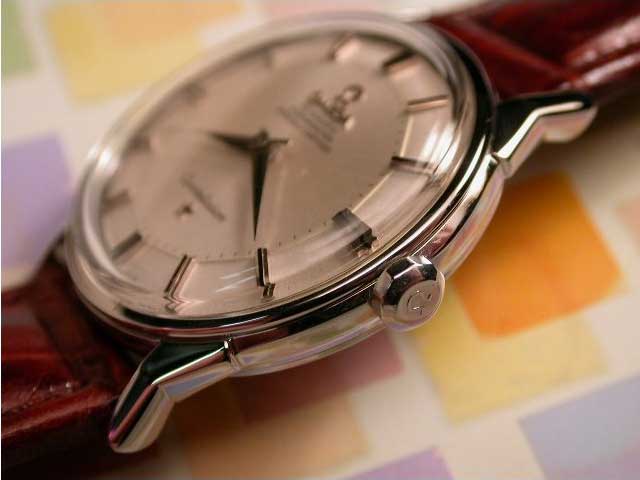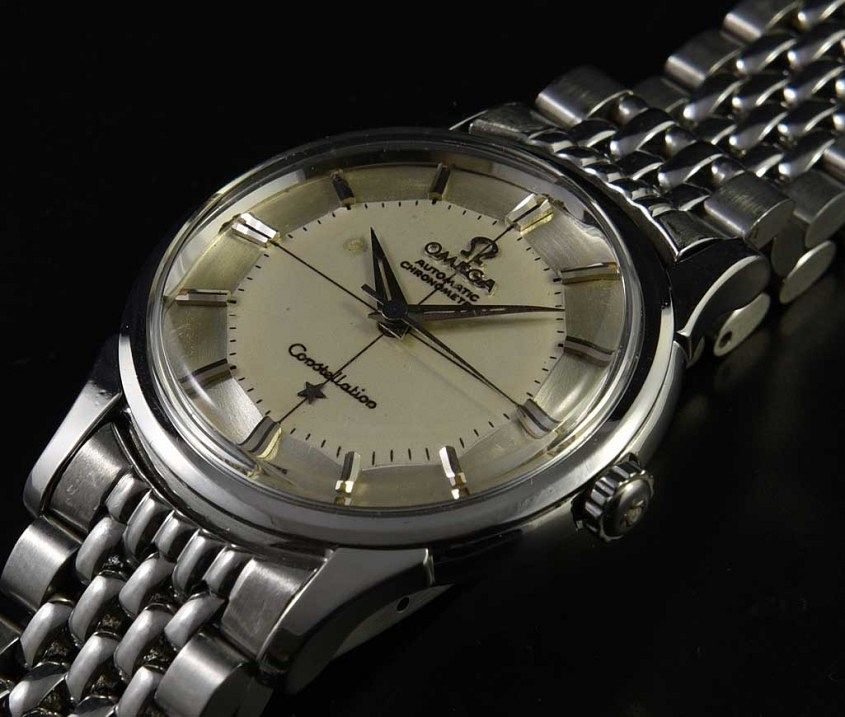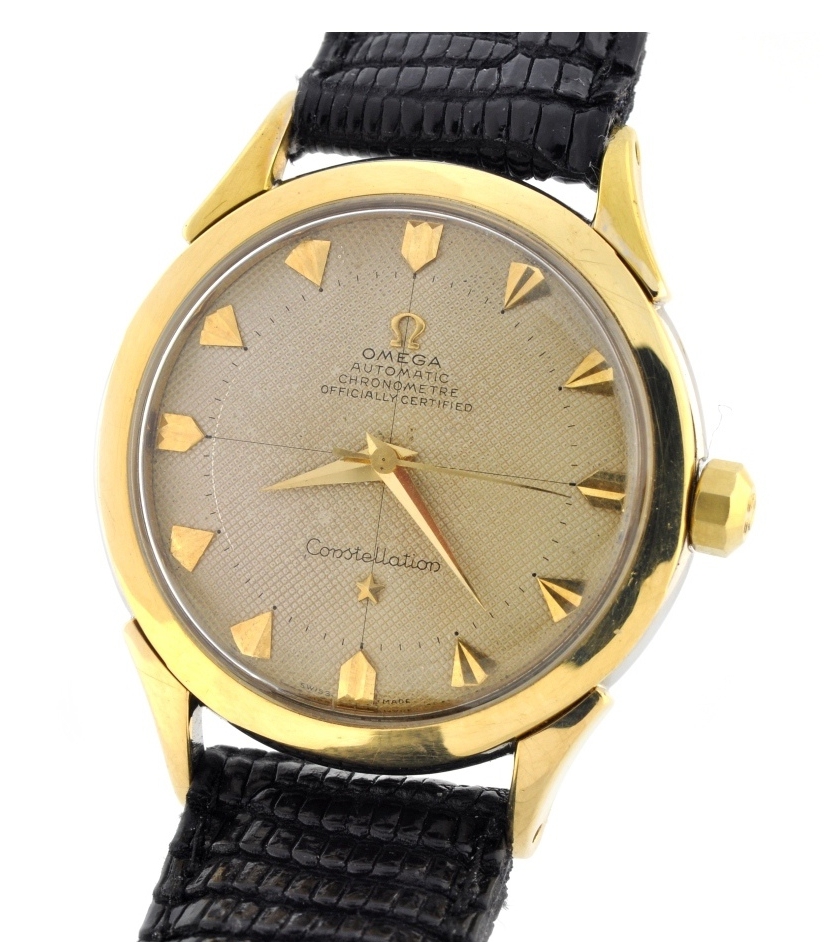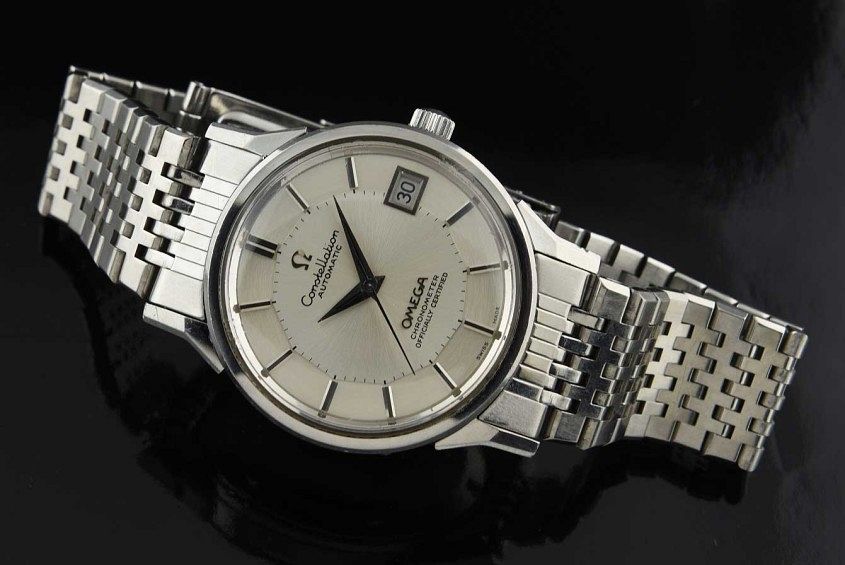VINTAGE BY DEREK DIER: 9 things you need to know before buying an Omega Constellation
Derek Dier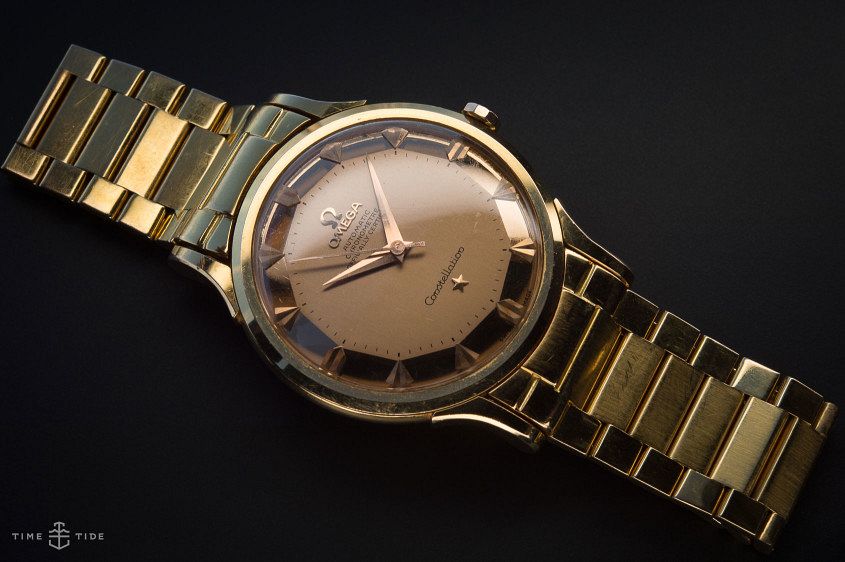
The Omega Constellation is so easily wearable. It’s one of those vintage watches almost every collector seeks at some point in their perpetual search for another piece to add to their collection. First appearing in 1952, the Constellation was designed to be Omega’s bellwether watch. This was the brand’s first mass-produced chronometer grade wristwatch and the brainchild of designer René Bannwart (who later founded Corum.) The Constellation was originally called the ‘Globemaster’ in the USA, though it was dropped in 1956 as Douglas Aircraft, manufacturers of the huge transport planes of the same name, held the trademark on the name. (As an aside, last year Omega brought that historic Globemaster name back, in a watch that channels the spirit of the original). And while the Constellation has a long and broad history, today I’m going to focus on its golden age, which ran from 1952 to the 1970s.
The crown
The 10-sided Omega crown is one of the defining features of the vintage ‘Connie’, as collectors often fondly refer to this watch. And if you’ve seen early Constellations with Seamaster crowns, it’s worth noting that these aren’t original. If Omega serviced these watches, they would have been replaced with the correct decagonal versions. Finding a vintage original crown can be a challenge, especially as many fakes have flooded the market. And while the gold-filled crowns are often found with the gold worn off where the Omega logo appears, it’s better to stick with that than replace it with the wrong version.
Observatory logo
Another iconic Constellation feature is the Geneva Observatory logo on the case rear. This denotes chronometer grade status of the movement, which means it’s been subjected to a series of performance tests including various temperatures and positions, and remained accurate to between +6 and -4 seconds per day. When evaluating a Constellation, dealers and collectors rate the level of wear or over-polishing by looking closely at the stars in the Constellation logo. In the best examples, all the stars appear clearly, and haven’t been worn down over time.
Case styles
Constellations have varied greatly over the years. The earliest versions had soft, inwardly curved lugs and were most often two-tone (gold capped and steel). In the solid gold versions, white and rose gold are the most desired by collectors. Platinum cases are rare as hen’s teeth, while the stainless steel grasshopper lug version is among the most sought after – and an excellent choice for anyone wishing to start off their collection. As a result, many good quality fake cases have appeared, with references 14900 and 167.005 seeming to be the most commonly counterfeited. There are many points to consider when determining if a case is genuine or not. For me, the easiest is to study the inner case writing and compare it to a genuine model, easily done thanks to Google image search. The bogus font appears more ‘etched’ and not as well defined as the originals.
Dial
This watch is really all about the dial. Those from the ’50s and ’60s are the most sought after, while the 12-sided pie-pan angular dial is especially coveted, allowing for a level of detail that makes collecting Constellations addictive. I also love the kite-shaped markers against the mirrored gold dials that appeared in the ’50s, for the way they reflect light. Then there are the textured dials from the early ’50s that are often found with mixed Arabic numerals and markers against a raised ‘waffle dial’ pattern. These earliest dials often acquire a patina, varying from dark brown to pink, which only adds to their beauty and authenticity.
Hands
Often hands will take on their own patina due to moisture and breakdown of the plating, with spotting most visible when viewed at an angle. And, sure, it’s great to have pristine hands that reflect the light like a mirror, but you can’t always get that – so having an original set of hands that matches the age of the dial is always an asset. Be sure to check that the second hand extends to the edge of the seconds register. Any more or less suggests it may not be original, and certainly warrants a more thorough inspection.
Movements

The first of the chronometer grade movements for the Constellation were the calibre 354. These were bumper automatic winding movements, which meant they wound via a rotor that ‘bumped’ back and forth between two springs. The bumps can feel a little jarring, but don’t be alarmed – that’s the way the movement operates. But do try to avoid shaking this watch to death. Later, throughout the ’60s, the majority of Constellations were powered by 500 series movements. These were a full 360-degree smooth rotor automatics, well finished in a copper-coloured gilt. Again, be mindful of counterfeits. The biggest sign of an improper Constellation is an absence of the wording “adjusted to five positions and temperatures” on the bridge of the movement. Without that, it’s not the real thing.
Metals
Constellations came in a wide array of case metals, which range (in my opinion) as follows, in terms of the most important and desirable:
• platinum
• white gold
• rose gold
• yellow gold
• steel
• rose gold capped
• steel and rose gold capped
• steel and yellow gold capped
• yellow gold capped
As I mentioned earlier, I would start any collection with an all-steel version as they’re well-priced watches that are reasonably easy to find and still a delight to wear.
Bracelets
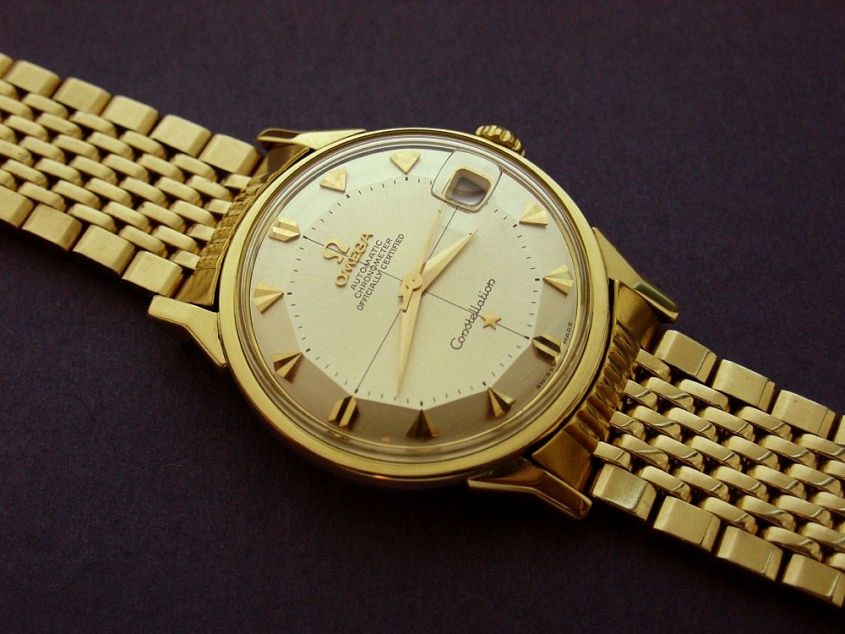
Two varieties stand out as most popular in the vintage range of Constellation bracelets. The ‘beads of rice’ bracelet is the first, closely followed by the brick link style. In solid gold, you will also find the Milanese woven. Personally, I prefer a leather band with an authentic Omega buckle to complete the look – if you can find one.
The last Constellation Pie-Pan
I chose to speak about this model because it was really only produced for one year and so few of them have been discovered. From my experience, it seems the last mechanical vintage Constellation with a pie-pan dial was manufactured for Japan in 1974, the reference 168.0065 which used a calibre 1011 chronometer grade movement with date. The pie-pan dial is slightly flatter than the early versions, and dauphine hands are still present. The raised steel Omega wording is located in the lower portion of the dial on this rare version. The Omega crown is not the 10-sided version, but rather a round crown. I remember discovering this watch when a Japanese gentlemen offered it to me years ago and I’ve found only one other since. These are the occasions when watch seeking becomes exciting.
The sheer number of variants of Constellation – from the classical pieces of the ’50s to the crazier designs of the ’70s and beyond – makes these watches endlessly appealing, turning collecting into a lifelong quest. No matter how many angles you look at it, the Connie is the king of Omega.





